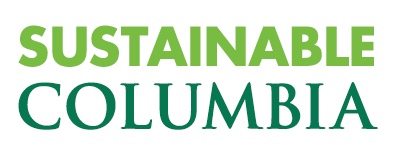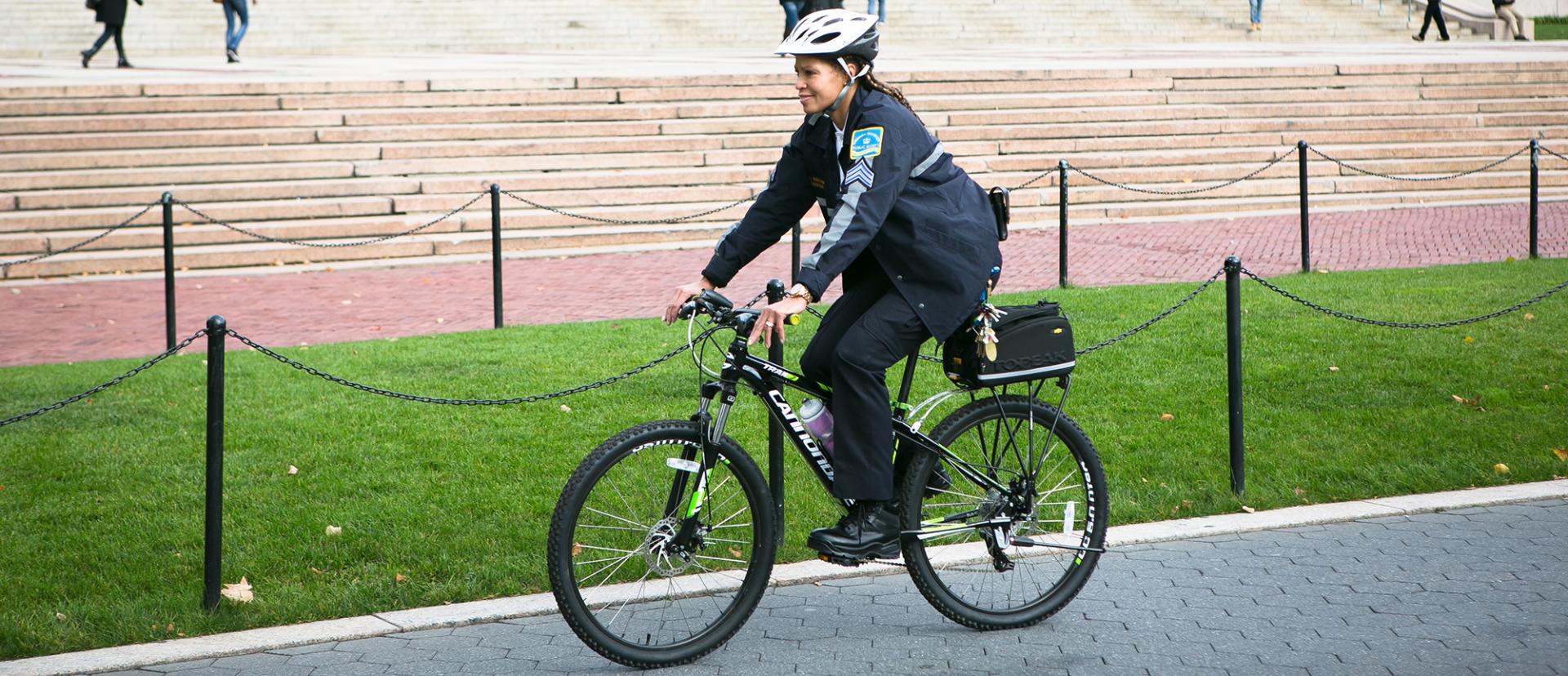Transportation
“New York City has the highest proportion of trips by modes other than private vehicles—walking, biking, and public transit—of any large U.S. city. Achieving deep emission reductions from this already low base in the transportation sector, therefore, entails even more dramatic changes than might be required in a more car-dependent system. It will also require a holistic approach given the maturity and diversity of the New York metro region’s transportation network. There is no ‘silver bullet’.” (New York City’s Roadmap to 80x50, p. 78)

Transportation-associated GHG emissions and air pollutants are an issue that the federal, state, and local regulations seek to curb.
As part of Columbia’s transition to track and report GHG emissions through The Climate Registry (TCR), Columbia will track transportation-related contributions to the Scope 1 and 3 emissions categories in the inventory.
For the purpose of GHG accounting and reporting, the forms of transportation and associated emissions are grouped into three categories:
- mobile combustion of fuels in transportation sources controlled by the University, for example fleet vehicles;
- commuting—the transportation of students and employees between their homes and their “worksites” in vehicles not owned or operated by the reporting company; and
- business travel—transportation of students and employees for University-related activities in vehicles not owned or operated by Columbia.
The first is classified as direct, Scope 1 emissions; the last two, as indirect, Scope 3 emissions.
Columbia has not yet accounted for transportation-related GHG emissions. In order to do so, a baseline of its current operations must be established and included in the GHG inventory. It must also integrate the University’s commitment to sustainability into vehicle purchasing decisions, including guidelines to make low-carbon vehicles preferential. This approach must expand—to discussions with shuttle service contractors to talk about alternative fuel models, and with vendors that deliver products and supplies on campus to talk about low-emission delivery vehicles and/or decreased frequency. Additionally, Columbia must invest in attractive transportation options that incentivize commuters to choose alternatives to driving cars to get to campus.
These endeavors cannot be realized overnight, so the first steps in the goals and strategies outlined below are to focus on developing a more in-depth understanding of current practices, and outline protocols and policies that will create a more systematic approach to decrease transportation-related GHG emissions.
Ultimately, Columbia’s efforts in this area will also improve local air quality, which is a primary concern for residents of dense urban neighborhoods such as Morningside Heights. Studies have shown the link between human health and vehicle emissions, especially because mobile source emissions occur at ground level where human activity is the greatest.
The University is committed to enhancing a sustainable urban campus with innovative transportation options, serving as a model for New York City and beyond.
On campus, the University has made significant strides toward reducing its GHG emissions from its transportation sector.
Columbia Shuttle Network
Columbia’s shuttle network helps reduce the number of single-passenger cars on the road. Columbia’s Fort Lee Shuttle transports commuters across the George Washington Bridge, moving approximately 300 commuters each day. The Columbia Intercampus Shuttle enables the University community to travel between the Morningside and Medical Center campuses. The Lamont Shuttle transports people between Morningside and the Lamont campus in Palisades, New York. Piloting new shuttle routes to reduce car dependency is underway.
Alternative Fuel Fleets
For on-campus operations, Columbia must take into consideration the fuel type for its owned and contracted vehicle fleet.
The University boasts an entirely hybrid-electric public safety car fleet. Out of Columbia’s Morningside campus’s total fleet of 54 vehicles, 40 percent are 100 percent electric or use a hybrid fuel type.
Sustainable Commutes
The University is proud that only 10 percent of Columbia’s affiliates have a drive-alone commute, and about 40 percent have an entirely walking commute. Columbia’s investment into offering local housing and its accessibility to mass transit—as well as adding commuter and intercampus shuttles, bicycle incentives, and carpool matching tools—has yielded leading results.
In 2014, Columbia created its first Transportation Demand Management (TDM) position to develop initiatives that aim to reduce vehicle trips to the University, with a particular focus on commuters. The TDM program was created as part of a series of commitments that the University made to New York City when it began to build the new Manhattanville campus just north of the Morningside campus. Given the anticipated influx of travelers to Columbia as it expands, Columbia is taking action to minimize congestion by providing commute alternatives other than driving for students, faculty, and administrators traveling into Manhattan from the tristate area. The University hosted its first-ever “Car-Free Day” on Earth Day 2016, where myriad programs were available to commuters at discounted rates, as well as research initiatives led by Earth Institute faculty, designed to target air pollution data collection from commuters in the Morningside Heights area.
Columbia’s new 17-acre Manhattanville campus fosters compact land-use principles in a city environment, and will make sustainable modes of transportation an easy and obvious choice for University members. Additionally, Columbia will continue to roll out its transportation plan so that switching to a low-carbon travel mode is an obvious choice.
Biking Access on Campus
Columbia’s support of a flourishing cycling community on, around, and between campuses not only supports wellness as a value, but also encourages reduced reliance on taxicabs or other vehicles to get around. Columbia currently holds both a silver business rating and bronze campus rating by the League of American Bicyclists and has scored 6.12 out of 7 possible points in the 2015 AASHE STARS Transportation section. Columbia’s new on-campus bike share program means all Columbia affiliates now have access to a bicycle on campus, and the program facilitates recreational and intercampus trips by bike.
Outlined below are the goals and corresponding strategies for the Morningside campus:
Goals:
For Fleet Vehicles, Commuting, Business Travel
- Establish 2017 Base Year inventories for fleet vehicles and bring them into the inventory for CY 2018.
- Bring inventories for commuting and business travel into the inventory for CY 2018.
- Define an absolute GHG reduction goal for CY 2020 for forms of transportation
- Identify specific strategies for meeting the 2020 goals and a roadmap to meet long-term aspirational goals.
Track annual performance according to TCR guidelines including application of The GHG Protocol’s “Corporate Value Chain (Scope 3) Accounting and Reporting Standard.”

